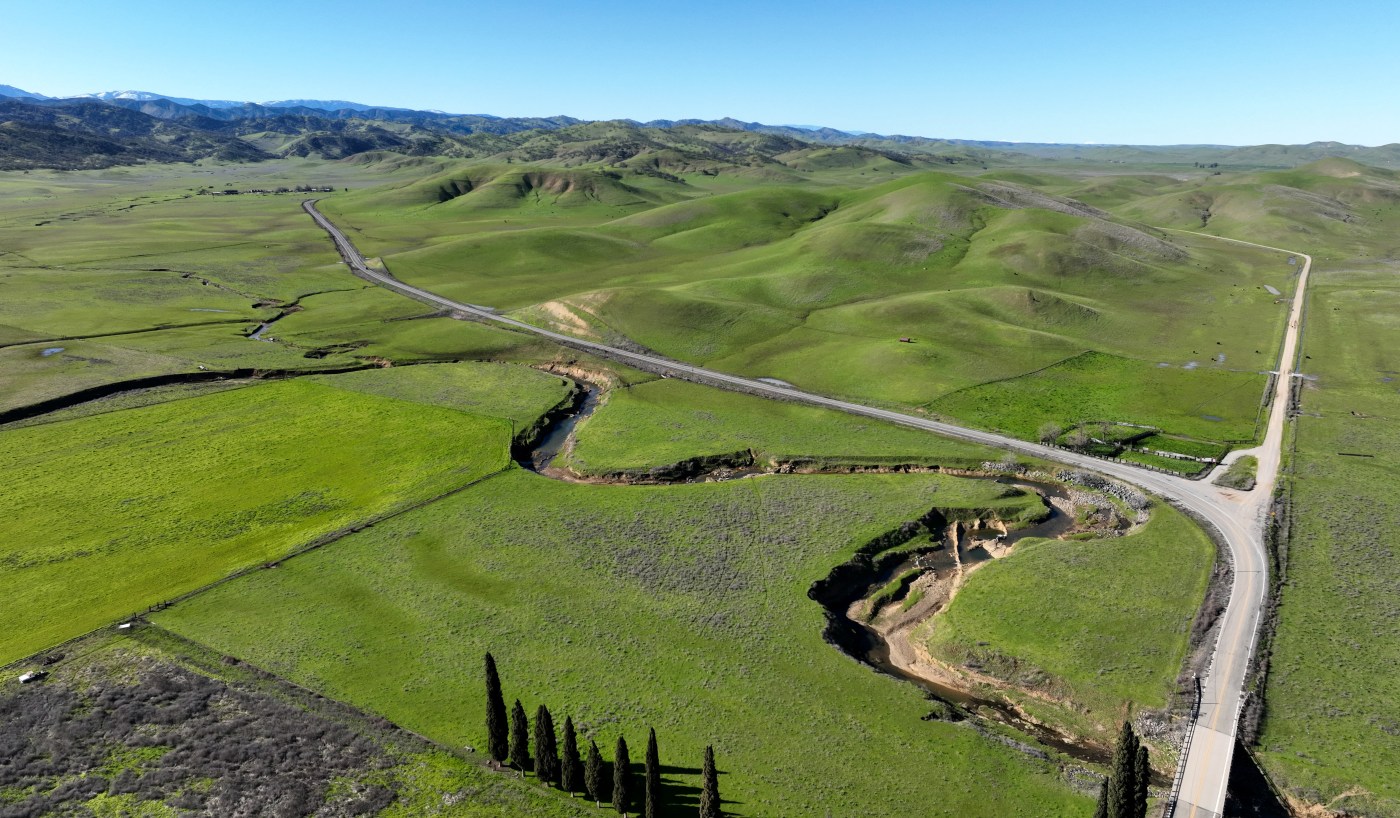
Construction costs to build the largest new reservoir in California in 50 years, a vast 13-mile-long off-stream lake that would provide water to 500,000 acres of Central Valley farmlands and 24 million people, including residents of Santa Clara County, parts of the East Bay and Los Angeles, have risen roughly 50%.
The price tag for Sites Reservoir, proposed to be located in the rural ranchlands of Colusa County 70 miles northwest of Sacramento, have increased from $4.5 billion to at least $6.2 billion, and potentially as much as $6.8 billion, the project’s planners confirmed Wednesday.
The increase is due to inflation for concrete, steel and other construction materials since 2021, when the original estimate was generated, planners said. Factory shutdowns during the COVID pandemic caused many construction materials to increase in price, and tariffs imposed by President Trump have led to more cost increases in recent months.
“Increasing costs are never looked forward to, but they are something that is a fact of life,” said Jerry Brown, executive director of the Sites Project Authority, the agency planning the reservoir. “Projects across the nation are seeing these kinds of increases. Yes it’s more expensive, but everything is more expensive.”
Brown, who is not related to the former governor, said the project remains on track and is scheduled to begin construction by the end of 2026 with completion by 2033. It would become the eighth-largest reservoir in California, holding 1.5 million acre feet of water — enough for at least 7.5 million people a year.
Sites would be the largest new reservoir built in California since 1979, when the federal government opened New Melones Lake in the Sierra Foothills between Sonora and Angels Camp.
Brown and other supporters, who include Gov. Gavin Newsom, former President Biden and Republican and Democratic members of California’s congressional delegation, call Sites Reservoir a critical part of California’s water future that can help capture more water during wet years for use during dry years. As climate change makes droughts hotter and more severe, they say, building more off-stream reservoirs is akin to putting more money in a savings account.
“People look at all the water running through rivers in wet winters and say why can’t we save more of that?” Brown said in an interview Wednesday.
“The longer we wait and the longer it takes to get this done, the more expensive it becomes. Even though it is costing more it is still something we need to do badly.”
Some environmental groups have opposed the project, however.
Last year, a judge in Yolo County dismissed a lawsuit from the Sierra Club, Center for Biological Diversity, Friends of the River, and other groups who sued, claiming the project’s environmental impact report was inadequate and needed to be redone.
The groups contend that Sites, which would divert water from the Sacramento River during wet winter months, would reduce flows into the Sacramento-San Joaquin Delta, harming fish and potentially degrading water quality.
The organizations lost their case on appeal, however, and the project has continued to move forward.
On Wednesday, some opponents said the higher price tag was expected.
“It’s not surprising,” said Ron Stork, policy director at Friends of the River, a Sacramento-based environmental group. “Large mega-projects typically escalate in costs considerably from their initial estimates. There’s a reason why these dams haven’t been built yet. We’ll have to see if the wealthy urban water districts in Southern California and the Bay Area want to continue to invest in this project.”
Stork said the price tag makes it less likely that Sites Reservoir will be built.
“It has about a 50-50 chance,” he said.
On Wednesday, Brown presented an update to the State Water Commission, a 9-member public agency that allocates state bond funds to water projects. His presentation revealed the new price tag.
Several water commission members spoke in support of the project despite its new cost.
Commissioner Daniel Curtin, director for the California Conference of Carpenters, noted that 22 water agencies around the state have committed money for planning and signed up to be partners, and 16 agencies are on a waiting list, asking for another 455,000 acre-feet of water beyond what the reservoir would hold when full.
Agencies are expected to sign final contracts by next year.
“The rubber hits the road when the money comes,” Curtin said. “But it sounds like the commitments are pretty strong.”
Those partner agencies include the Santa Clara Valley Water District in San Jose, Zone 7 Water Agency in Livermore, Metropolitan Water District in Los Angeles, and others.
Commissioner Jose Solorio, a former state assemblyman, added: “All of the state would benefit from the construction of this project.”
The state water commission has set aside $875 million for Sites from Proposition 1, a water bond passed by voters in 2014. Other funds would come in the form of loans and grants that were approved during the Biden administration, with the majority coming from higher water rates from partner agencies.
Had the reservoir already been built, it would have filled to the top after the past two wet winters, Brown said Wednesday. It would have diverted only about 3% of the water that flowed through the Delta during the wettest months during big storms, he added.
The project still is awaiting a decision on water rights, expected to come by the end of this year from the State Water Resources Control Board.
Brown said that questions about the need and cost were raised during planning for other large California reservoirs in decades past which now form the backbone of the state’s water supply.
“Rarely when looked back upon 20, 40 or 60 years later are these projects regretted in terms of the benefits to society,” he said. “These are hard decisions to make as a society, but we are building this for ourselves and future generations.”